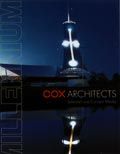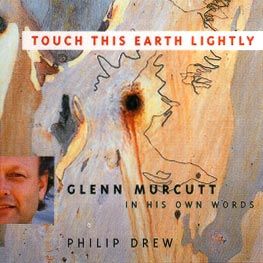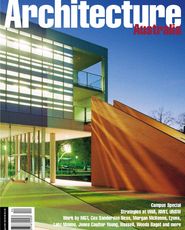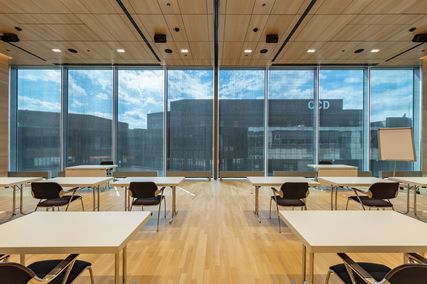Unattributed reviews by Justine Clark. Architext bookshops are at Tusculum, Sydney, ph 02 9356 2022 and 41 Exhibition Street, Melbourne, ph 03 9650 3474
The Art Movement In Australia: Design, Taste and Society 1875-1900

Andrew Montana. Miegunyah Press, $88.
This new book takes a long-overdue look at an important phase in Australian design history – the last quarter of the nineteenth century. “Australian” is perhaps too generous a word, as the concentration is firmly on Melbourne and Sydney. Montana’s main interest is in the decorative arts and interiors of the period, and the society and taste that brought them about. He gathers them up under the rubric of the “Art Movement”, although his emphasis is primarily on the Aesthetic Movement.
He opens with an overview of some British post-Pugin design reformers such as Bruce Talbert and E. W. Godwin, and the development of aestheticism, the Anglo-Japanese and associated styles and the great nineteenth century trade exhibitions that promoted and displayed them. While this material is well known in a European context, its impact on Australian habits of production and consumption is less well understood. The second chapter focuses on the position of women who, largely confined at home, exercised their taste and will in the acquisition and display of ornaments and in the production of needlecraft, art pottery, tile painting and fashion. In my view the best portions of the book are the detailed and lengthy studies of some of the grand interior schemes of the decades under review. One of the most significant was the British firm Gillows’ scheme for the Toorak mansion Mandeville Hall, and Montana spends some time tracing its genesis in the same firm’s interior for G. G. Scott’s Midland Grand Hotel in London 1876 and the 1878 Paris Exhibition. He then follows its impact on Melbourne’s boom houses – Kamesburgh, Villa Alba, Clivedon – and the decorating firms such as Patersons, in a fascinating study of taste in the late seventies and eighties. There are some wonderful colour reproductions of these interiors. He fills in the context by examining the emporia which sold the goods that filled these houses (Rocke’s, Cullis Hill), their advertising outlets and their influence on metropolitan taste. The Sydney firm Lyon, Cottier & Co, with its British parent, has a chapter of its own and its interior of Wardell’s E S & A Bank in Melbourne is rightly afforded a detailed discussion.
While the main thrust of the book is towards interior decoration and the decorative arts, with architecture as a necessary backdrop, the final chapter attempts to deal with architecture more closely and the development of the Arts and Crafts movement. This is the least successful part of Montana’s thesis, for the work discussed is still Queen Anne or aesthetic or at best transitional. He does not appear to have taken advantage of the scholarship available on this period, his bibliography in the area being very meagre and some of his observations muddled.
The key figure in Melbourne in the late 1880s was of course English-trained Walter Butler. By the late 1880s his strongly held views were widely known and hotly debated in architectural circles in Melbourne. By 1891 Butler and Ussher had designed Blackwood, one of the seminal houses of the Arts and Crafts movement in Australia and the whole discussion about interior design, from the architect’s point of view, had changed. Given Montana’s evident interest in the social factors that propelled the reformist developments in art production in the nineteenth century, it is a pity a chapter was not spent exploring the role of technical education, schools of design and mechanics institutes in the creation of reformed taste, particularly Sydney Technical College and Melbourne’s Working Men’s College. In spite of these reservations however, The Art Movement in Australia is a very valuable text on a still little understood period.
Harriett Edquist.
Millennium: Cox Architects, Selected and Current Works

Edited by Renee Otmar. Images
Publishing, $105.
The Cox Group of architects is one of the most prominent practices of the last forty years of Australian architecture. Beginning with work by Philip Cox in Sydney in the 1960s, it developed through a series of projects for the National Capital Development Commission in Canberra in the seventies and early eighties and expanded through Australia. In recent years there have been an increasing number of large overseas projects. The breadth of work is impressive – from houses to hospitals, bus shelters to urban planning. Impressive, too, is the assurance of the work, and how much of it reflects and has influenced what has come to be regarded as characterising recent Australian architecture: steel and glass and masonry articulated in bright light, with a spirit of informal but controlled inventiveness and sometimes complex but always carefully coordinated geometry.
This is a large and attractive book, well written with many illustrations. It contains an introduction by Philip Cox and Michael Rayner outlining the origins and aims of the practice, a series of ten illustrated essays on aspects of the group’s work (such as “sport”, “living”, and “urban planning and design”), descriptions of 31 projects from the period 1995-2000, and a brief “firm profile” which includes a chronology of selected projects and useful bibliography.
The text is written in the voice of the practice, playing down individual authorship of words and pictures as well as designs.
While not self-critical or highly theoretical (that is better authored by independent critics), it sets out how the practice sees itself as responding to contemporary issues of regionalism, globalisation, technology, environmental concerns and economics, and provides a narrative about how these are played out in projects. It is a fine record of a body of work of which the practice is, and should be, proud.
Antony Radford.
Touch This Earth Lightly: GlennMurcutt in His Own Words

Philip Drew. Duffy and Snellgrove, $33.
Philip Drew’s 1999 edited interviews with Glenn Murcutt, conducted during Drew’s research for Leaves of Iron, has been re-released in a smaller format. The content and book design remain the same.















